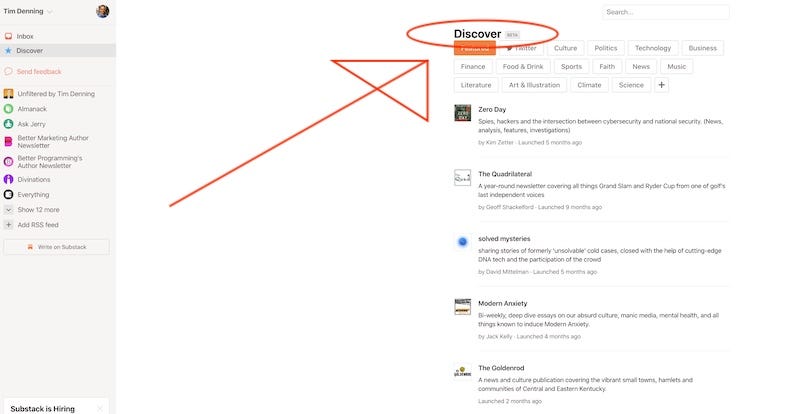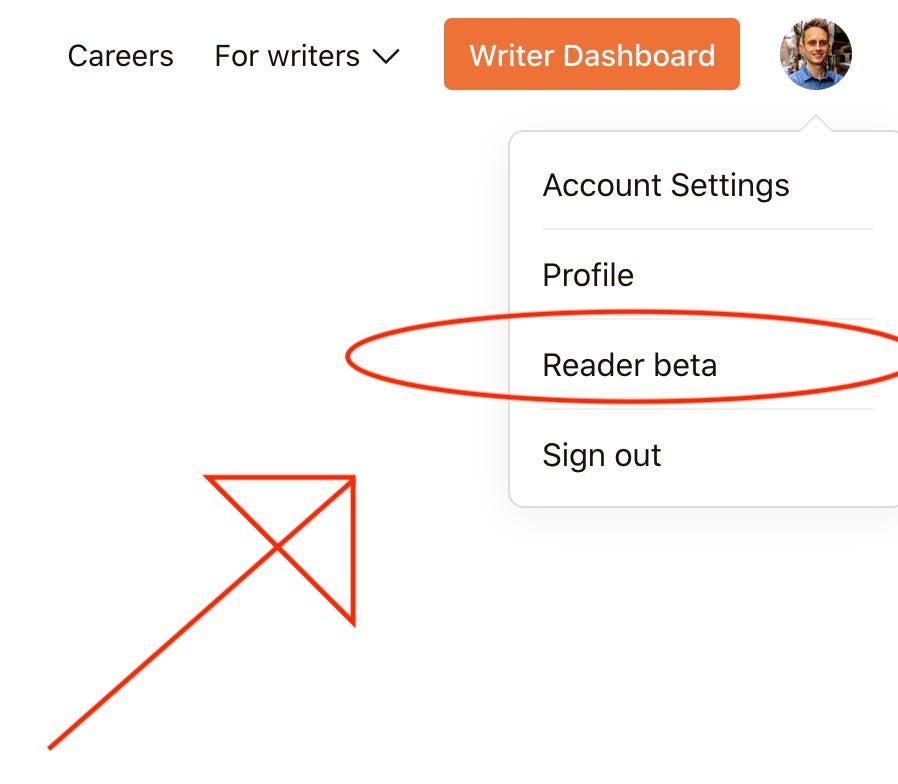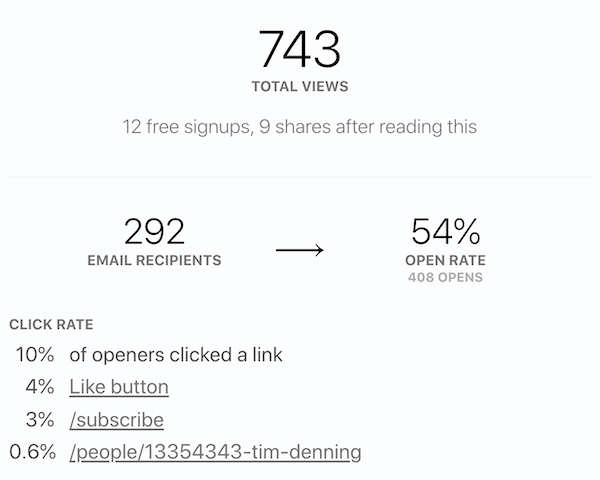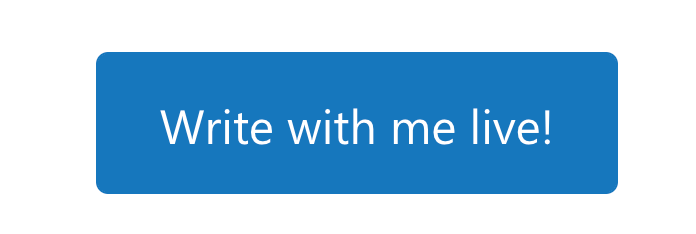Substack confuses most people.
We innocently believe it’s another newsletter platform. That’s why a lot of great content creators have missed the opportunity. They’re too close-minded to try it. I suffered from the same narrow-minded thinking too.
So I decided to conduct an experiment and start a Substack publication. It’s been a few months. The lessons will completely change your thinking about Substack — and the strategies can be used on other platforms.
Substack Created a Paradigm Shift
Newsletters existed before Substack. It took me a while to process what Substack has done. Here it is: Substack has forced content platforms to reconsider the ‘follower’ model.
Followers are an audience a content creator can’t directly communicate with, without a pain in the butt algorithm getting in the way. Substack said “Content creators own their audience data from now on. Forever”
If you’ve had enough with Substack you can pack your audience into a neat, little container, and quietly walk over to the next platform that has better features. That simple philosophy creates accountability that bossman CEO of Facebook and others don’t have.
Accountability prevents the extortion of content creators, so we don’t get taken advantage of like Uber drivers have been.
The Secret Feature Substack Has Been Working On

You might think it’s too late to join Substack. Here’s why you’re right on time. As you read this, Substack is quietly working behind doors on adding discoverability. What does that mean in English?
Substack is going to have a newsfeed like many other social media platforms such as Twitter. This means you won’t have to import email subscribers to Substack to create an audience on there. Nope.
The signs of Substack’s secret plan are easy to see if you look hard enough. The words “discover, reader, and beta are all over the platform.”


If you publish on Substack now, then you’ll have a headstart — when they eventually launch discoverability — to gain subscribers for free and build an audience before the good times slow down like they did with NewsBreak. Discoverability will make Substack a real platform to watch for content creators. Keep an open mind to get a headstart.
Substack is about to go from a newsletter platform to a blogging platform. Read that again.
Substack Is Invisible
- There’s no talking about Substack on the platform.
- There’s no “How I Made $49 on Substack.”
- There are no content creators fighting for pennies in the gutter.
Substack doesn’t tell you how to write. They don’t determine what is quality writing and what isn’t. There are no Substack editors. There are no publications to submit to. In fact, I haven’t heard from Substack since I started. I like it that way.
When I sit down to write, I want the platform I’m punching words into to be invisible. Less platform noise, more writing signal. Perhaps you can relate?
You Write Completely Different on Substack
I feel like it’s 2014 all over again. You can swear like a drunken sailor. You can use controversial images. You don’t have to link to every tiny thing you say to prove it’s fact. The formatting can be wild. I’ve even started inserting crazy gifs into my text to spice up the mood and avoid the drain of reading black words on a white page.
Nobody is in the back of my mind saying “you can’t say that, pal.” You say whatever you want on Substack without a care in the world.
Substack can give you back creative freedom. Bliss.
The Email Stats Are Stupidly High
My email open rate in ConvertKit is currently 30%. My email open rate in Substack is higher than 50%. The number of unsubscribes is almost zero compared to my ConvertKit email list.
The deliverability of emails to readers is high too. I suspect platforms like Gmail have marked Substack emails as high-quality content and adjusted their algorithms — that decide whether your emails end up in the trash — with a blinking green light that signals “let this email see the light of day.”
Simple Analytics Tell You What to Do Next
I’m a content creator dummy. I can’t read data to save my life. Substack has really good analytics. They email you a report of how your article went. They track every part of the email so you can work out what you did well and what you didn’t.
My favorite feature is, you can see what percentage of readers clicked links. This is bloody helpful. Like wow!

The Views Don’t Just Come from Email Subscribers
Notice something odd in the screenshot above? 292 email recipients generated 743 total views.
The reason is that Substack gives you more than an email list — they also give you a Substack website. That website is searchable in Google and on the Substack platform.
The difference with a Substack website
You get your own website on other content platforms too. The difference with Substack is there are no distractions.
No other content creator is promoted to your subscribers, so there’s no risk of a world-class writer like Mark Manson showing up unannounced and stealing your reader away from you with their famous reputation. Think about that.
The Social Side of Substack Makes It Better than Traditional Emails
Substack made email into a social media platform. You can leave comments on a Substack email. This starts conversations and builds intimacy with readers. A reader has the choice to either leave a public comment or send you a private email. When you write about touchy subjects such as mental illness, like I do, this is a huge benefit.
The Publication Is You
A newsletter on Substack is called a publication. Publications have themes and highlight a limited number of topics. When I began my Substack experiment this confused me, and delayed me starting. Then a helpful person said “You’re overthinking it buddy. The publication is YOU.”
People don’t sign up to a Substack newsletter that only focuses on one topic. A lot of readers sign up to a content creator they love, so you can write about whatever topics you want. Yay.
The Hidden Superpower of Substack
There is a feature most content creators don’t know about. Substack allows you to add “call-to-action” buttons. Traditionally these buttons are placed at the end of the content. But it’s perfectly normal on Substack to add these buttons multiple times throughout the story.
Writer Zulie Rane taught me that there’s another option when linking to other stories or content.
I used to put call-to-actions in my emails that would feature the text “click here” which was a hyperlink. The audience has to click the underlined text. Zulie places videos in her emails and uses custom CTAs instead (see screenshot below).
below).


I’ve tested the same method with Substack. Now here’s where it gets cool. You can add a custom CTA in your article to sell a book or course. Then Substack gives you analytics to measure the success of those buttons. You can tweak the labels on the buttons as the results flood in. Mind blown.
A Counter-Intuitive Way to Make Money on Substack
I’ve seen many content creators whinging about the 10% fee Substack charges when you switch on monetization. Basically, you can offer a free newsletter on Substack or a paid one by enabling Stripe payments.
With all the complaints I simply said to myself, “My Substack costs $0.”
How is this possible? Well, when you add CTAs in your newsletter, you can make money offline through affiliate links, books, coaching, courses, etc.
The idea of charging every audience member money to gain access to your content is stupid and needs to die. So if you don’t charge for your Substack, there’s no 10% fee. Genius.
If you decide to charge for your Substack later, you can simply lift and shift your newsletter to a platform like Ghost and get much more competitive fees.
Pessimism destroys opportunities. Creativity helps you make money as a content creator.
Substack Subscribers Grow Faster like This
I’ve told you already that my Substack is $0. Free content grows your audience 10X faster. Back in 2014 when I first started writing, I said to myself “Write as long as you can for free Timmy Boy.”
Many content creators try and make money too fast, and that’s why they fail miserably. Greed takes over. They start overpromoting and jamming links in the audience’s faces. Their Twitter timeline is full of back-to-back links to their blog with 0–2 likes. They start metaphorically stabbing other content creators in the face with their hateful comments because they’re envious and mad about other people’s success.
$0 is the answer to a lot of content creator problems.
The audience is much more forgiving while you’re building your skills and creating a library of content when the price is free. An audience is ruthless when they’re paying you money and you accidentally waste their time.
The #1 Mistake Content Creators Make on Substack
I’ve researched dozens of other content creators who have gone to Substack and faceplanted.
Substack is all about exclusivity and superfans. You will fail on Substack if you take content from other platforms and simply dump it there. Laziness doesn’t work out well for content creators.
To succeed on Substack you have to publish exclusive content there that can’t be found anywhere else on the internet. That’s the price you pay.
The #1 Rule of Substack
You’ve got to show up every single week. Once every now and then doesn’t work for Substack. Creating content every day is the biggest hack there is, yet many people never do it.
Write every day for a year and you’ll have an awesome after hours side hustle. Write every day for five years and you’ll never need to work again and have an audience that pays your bills forever. Nobody wants to hear this so I rarely offer this advice, but it applies to Substack too.
Promote Your Substack like a Badass
Marketing a Substack is easy. This is how you market pretty much anything online. Ready?
You simply add a link to your Substack in the bio of your various social media accounts. People click the link and find your Substack.
I didn’t even do that. I didn’t tell anybody about my Substack experiment. It grew organically through word of mouth. A proven way to promote your Substack is to announce it on social media and add a link to it. I’m lazy and non-fancy so I did nothing. You do you.
The Surprising Tactic You Can Steal
This revelation really surprised me. Your Substack can grow rapidly via word of mouth. But how?
Well, you manually add a share button at the end of every Substack email. People click the share button and it forwards your work to their network. Add some custom text to encourage the audience to share (see below).

This approach to sharing content is much more intimate than traditional sharing on social media. While there are multiple places a reader can share your Substack, the majority of the audience will choose “share via email.” Emails from friends are more likely to be seen. Therefore, the likelihood of a person getting forwarded your Substack from a friend and subscribing is much higher.
The share button grows your Substack quicker than you think.
Some Extremely Bad News About Substack
Wait, what?
Yep, I’m here to be honest with you and not sugarcoat anything. Substack has not embraced blockchain technology. This may not sound crucial but it is. Blockchain is how content creators publicly prove ownership of our work.
Blockchain also prevents a human in a penguin suit from turning off your account for no good reason. Decentralization enables democratic rules to be applied to content creators, rather than the dictator rules applied by big tech. Took me four accidental bans from LinkedIn to learn the power of this feature. Blockchain freedom is the same reason Jack Dorsey is decentralizing Twitter.
There’s another huge trend Substack is missing: NFTs. Other platforms like Bitclout are allowing content creators to turn their writing into NFTs. Why does this matter? NFTs make your content portable, transferrable, and allow you to co-produce work with other content creators and split ownership.
But let’s be frank. NFTs create new revenue streams for writers. You can sell your stories, blog posts, and writing as an NFT and easily get paid. Substack hasn’t tapped into this trend and that worries me.
Bottom Line
My Substack experiment has taught me a lot and I’ve been sharing my learnings with big-name writers. Now you know what they know. The bring-your-own audience concept is huge. The customizable CTA buttons are massive. The creative freedom of escaping the algorithm is stunning.
Set up a Substack. Charge $0. Sell an eBook using custom CTAs. Add a share button to promote word of mouth of your Substack. Keep publishing on multiple platforms to de-risk your side hustle. And .. create from the heart.
If your Substack experiment fails, export your audience and take it somewhere else. No problemo. *Cuts shackles from arms and legs*


